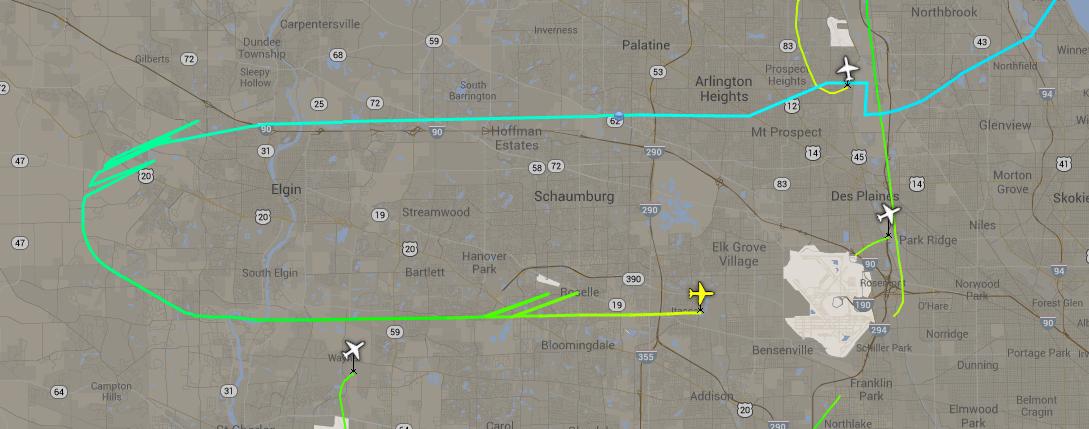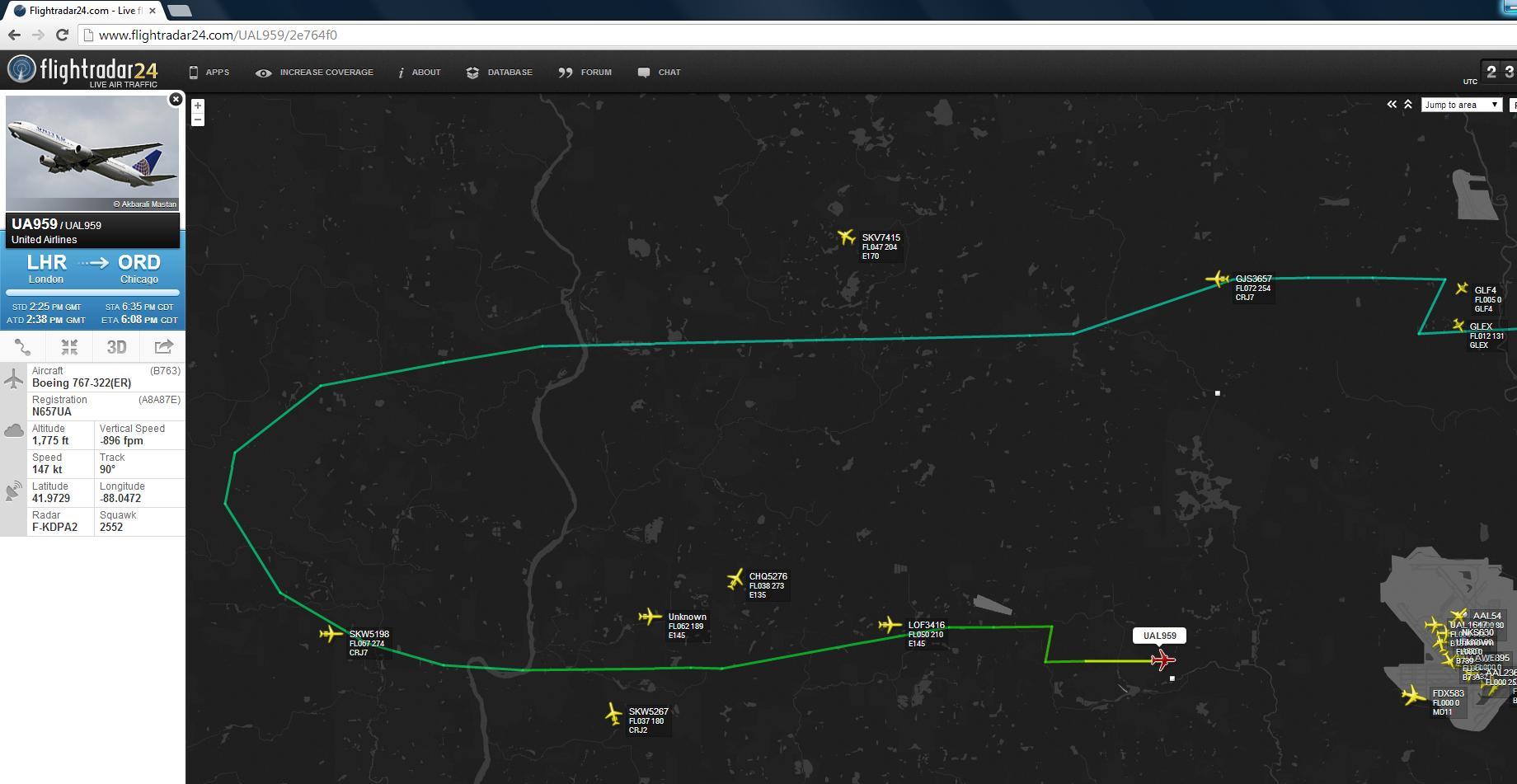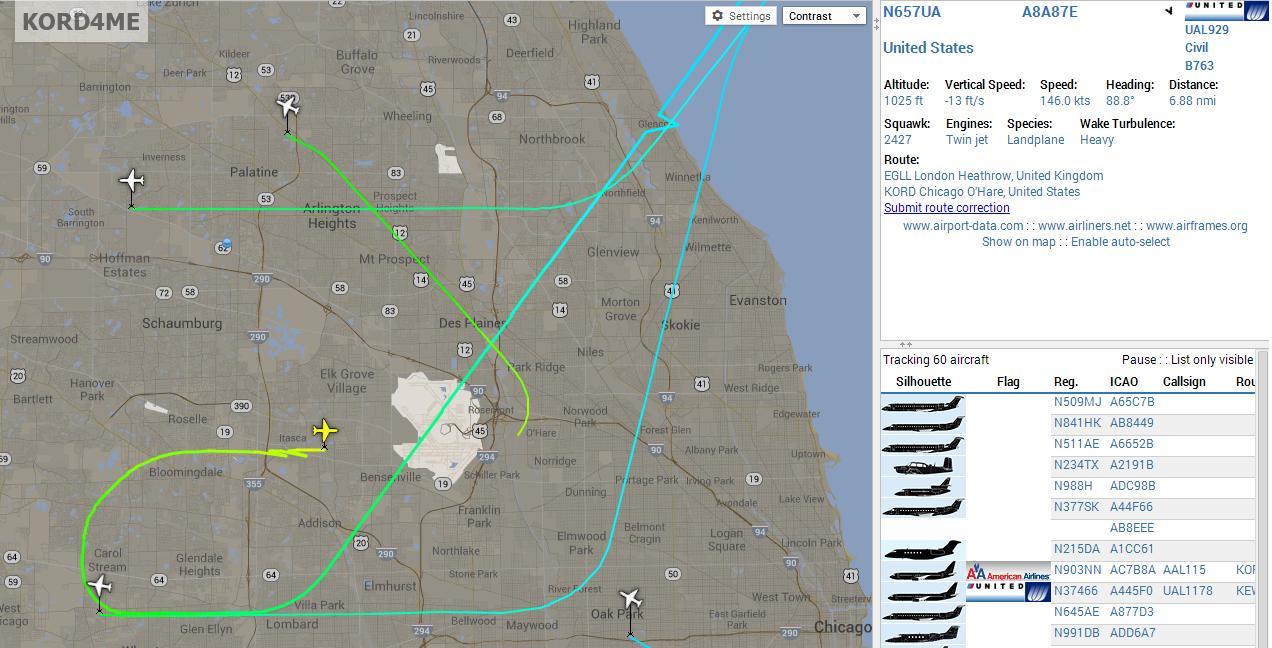I was looking through my virtual radar logs one of the days and found this "glitchy" ADS-B behavior. I am almost 100% sure that this is not due to my antenna or setup since two independent different radars confirmed this weird behavior from FlightRadar24. Also A/C before and after this one did not exhibit this behavior.
- Does anybody have any thoughts as to what may be happening???
- Why is the "skew" at seemingly same angle? Is that anything?
- In light of MH370, does this happen often, how reliable is that GPS data?
Tail # N657UA Boeing 767-300 Typical route between EGLL and KORD
Time of occurrence is approximately: 3/16/2014 6:09pm CST
I have also verified FlightAware is ALSO showing the same weird glitch.
See below "yellow" highlighted airplane:

Same A/C from FlightRadar24:

UPDATE:
This seems to be related to THIS aircraft. The explanations given (GPS->INS->GPS switching) still applies in my opinion, but wanted to give another screen shot. Here it is today (3/30/2014) and again displaying this behavior - should their maintenance department be alerted to adjust their GPS antenna??

